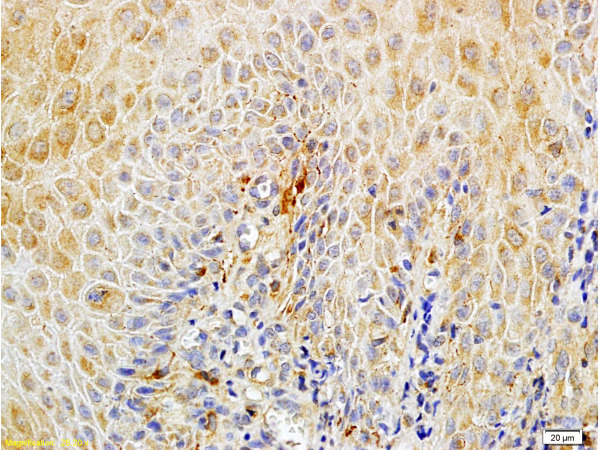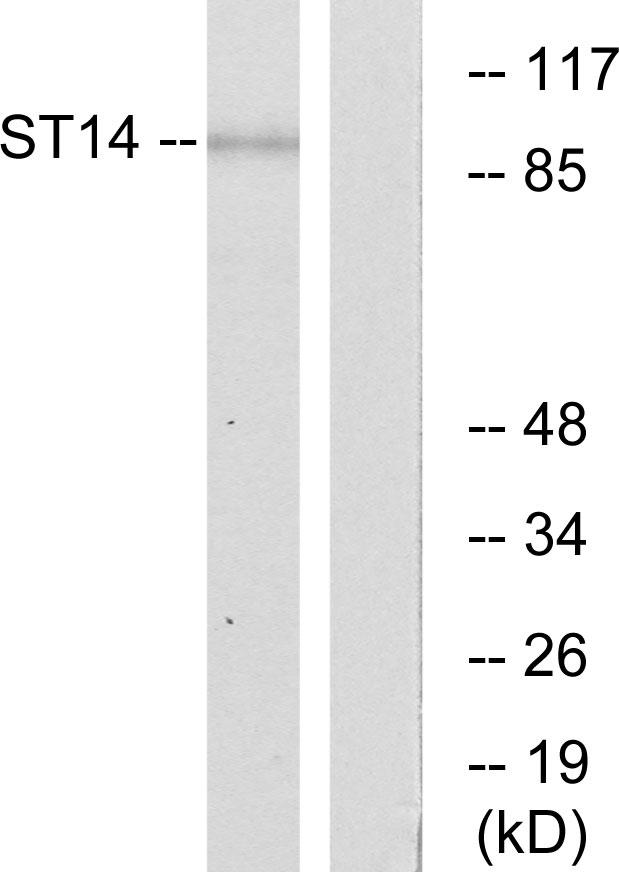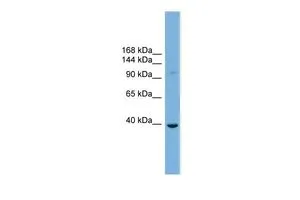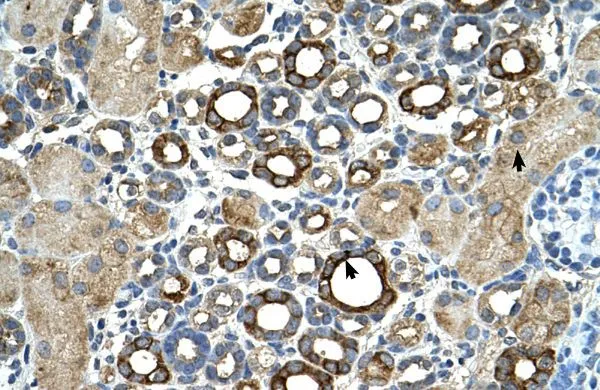![Whole cell extract (30 microg) was separated by 7.5% SDS-PAGE, and the membrane was blotted with Matriptase / ST14 antibody [M24] (GTX02803) diluted at 1:1000. The HRP-conjugated anti-mouse IgG antibody (GTX213111-01) was used to detect the primary antibody, and the signal was developed with Trident femto Western HRP Substrate. Whole cell extract (30 microg) was separated by 7.5% SDS-PAGE, and the membrane was blotted with Matriptase / ST14 antibody [M24] (GTX02803) diluted at 1:1000. The HRP-conjugated anti-mouse IgG antibody (GTX213111-01) was used to detect the primary antibody, and the signal was developed with Trident femto Western HRP Substrate.](https://www.genetex.com/upload/website/prouct_img/normal/GTX02803/GTX02803_20201204_WB_w_23053122_788.webp)
Whole cell extract (30 microg) was separated by 7.5% SDS-PAGE, and the membrane was blotted with Matriptase / ST14 antibody [M24] (GTX02803) diluted at 1:1000. The HRP-conjugated anti-mouse IgG antibody (GTX213111-01) was used to detect the primary antibody, and the signal was developed with Trident femto Western HRP Substrate.
Matriptase / ST14 antibody [M24]
GTX02803
ApplicationsImmunoFluorescence, ImmunoPrecipitation, Western Blot, ImmunoCytoChemistry, ImmunoHistoChemistry, ImmunoHistoChemistry Paraffin
Product group Antibodies
ReactivityHuman
TargetST14
Overview
- SupplierGeneTex
- Product NameMatriptase / ST14 antibody [M24]
- Delivery Days Customer9
- Application Supplier NoteWB: 1-5 microg/ml. *Optimal dilutions/concentrations should be determined by the researcher.Not tested in other applications.
- ApplicationsImmunoFluorescence, ImmunoPrecipitation, Western Blot, ImmunoCytoChemistry, ImmunoHistoChemistry, ImmunoHistoChemistry Paraffin
- CertificationResearch Use Only
- ClonalityMonoclonal
- Clone IDM24
- Concentration1 mg/ml
- ConjugateUnconjugated
- Gene ID6768
- Target nameST14
- Target descriptionST14 transmembrane serine protease matriptase
- Target synonymsARCI11, CAP3, HAI, MT-SP1, MTSP1, PRSS14, SNC19, TADG15, TMPRSS14, suppressor of tumorigenicity 14 protein, channel-activating protein 3, membrane-type serine protease 1, prostamin, serine protease 14, serine protease TADG-15, suppression of tumorigenicity 14 (colon carcinoma), suppression of tumorigenicity 14 (colon carcinoma, matriptase, epithin), tumor associated differentially expressed gene 15 protein
- HostMouse
- IsotypeIgG
- Protein IDQ9Y5Y6
- Protein NameSuppressor of tumorigenicity 14 protein
- Scientific DescriptionThe protein encoded by this gene is an epithelial-derived, integral membrane serine protease. This protease forms a complex with the Kunitz-type serine protease inhibitor, HAI-1, and is found to be activated by sphingosine 1-phosphate. This protease has been shown to cleave and activate hepatocyte growth factor/scattering factor, and urokinase plasminogen activator, which suggest the function of this protease as an epithelial membrane activator for other proteases and latent growth factors. The expression of this protease has been associated with breast, colon, prostate, and ovarian tumors, which implicates its role in cancer invasion, and metastasis. [provided by RefSeq, Jul 2008]
- ReactivityHuman
- Storage Instruction-20°C or -80°C,2°C to 8°C
- UNSPSC12352203
References
- Camerer E, Barker A, Duong DN, et al. Local protease signaling contributes to neural tube closure in the mouse embryo. Dev Cell. 2010,18(1):25-38. doi: 10.1016/j.devcel.2009.11.014Read this paper







